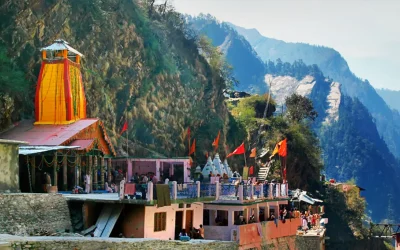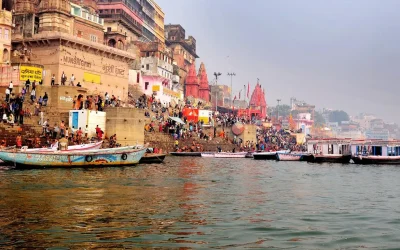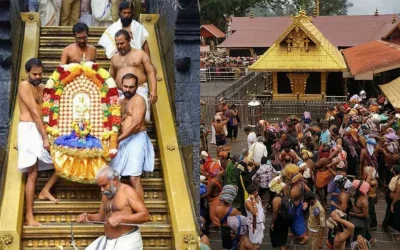History of ayodhya
The history of the Ayodhya Ram Mandir is a complex and multifaceted narrative that spans centuries and has been marked by religious, cultural, and political significance. Ayodhya, revered as the birthplace of Lord Rama in Hinduism, holds a central place in the religious consciousness of millions. The roots of the Ayodhya dispute can be traced back to the Mughal period when, in 1528, the emperor Babur is said to have constructed the Babri Masjid near the location said to be the birthplace of Lord Rama’s

The colonial era introduced further complexities to the issue. In the 19th century, the British colonial administration erected a fence to separate the inner and outer courtyards of the disputed site, a measure aimed at preventing communal clashes. Post-independence 1947, India witnessed a surge in tensions surrounding the Ayodhya site. In that year, idols of Lord Rama mysteriously appeared inside the Babri Masjid, leading to a legal dispute over the ownership of the land. This marked the beginning of a long and contentious legal battle that would shape the course of events in the years to come.
1986 was a turning point in the Ayodhya dispute when a district judge ordered unlocking the Babri Masjid, allowing Hindus to worship inside the structure. This decision intensified religious and communal tensions between the Hindu and Muslim communities. In 1987, the Vishwa Hindu Parishad (VHP) launched a campaign to construct a Ram Mandir at the disputed site, gaining widespread support among Hindu nationalists.

The most pivotal and controversial event in the Ayodhya saga occurred on December 6, 1992, when a large gathering of Hindu activists demolished the Babri Masjid. The destruction of the mosque triggered widespread communal riots across India, leading to significant loss of life and property. The event had far-reaching consequences, reshaping the country’s sociopolitical landscape and influencing the course of religious and cultural discourse.
In the aftermath of the Babri Masjid demolition, legal battles over the ownership of the Ayodhya site gained momentum. Various Hindu and Muslim organizations filed petitions in court, each asserting their claim to the disputed land. The legal proceedings continued for years, contributing to a protracted period of uncertainty and tension.
In 2010, the Allahabad High Court delivered a significant verdict on the Ayodhya dispute. The court divided the disputed land into three parts – one-third for the Hindu parties, one-third for the Sunni Waqf Board, and the third for a Hindu religious denomination. While this judgment aimed to address the competing claims of the parties involved, it also sparked debates and discussions about the fairness and implications of the decision.
The Ayodhya dispute culminated in November 2019 when the Supreme Court of India delivered a landmark and unanimous judgment. The Supreme Court ruled in favor of constructing a Ram Mandir at the disputed site, emphasizing the significance of Lord Rama in the Hindu faith. The court also directed the government to provide an alternative site for constructing a mosque, seeking to balance the interests of both communities.
2020 witnessed a historic moment with the Bhoomi Pujan, a groundbreaking ceremony to construct the Ayodhya Ram Mandir. The ceremony, attended by top political leaders and religious figures, marked the official beginning of the temple’s construction. The event symbolized not only the realization of a longstanding demand of the Hindu community but also prompted discussions about the secular fabric of India and the challenges of balancing religious sentiments with constitutional principles.
The inauguration of the Ayodhya Ram Mandir on January 22, 2024, marks a momentous occasion beyond the mere construction of a physical structure. Dedicated to Lord Rama, the temple manifests cultural unity, faith, and a deep-rooted connection to India’s religious and mythological heritage. More than a monument, the Ayodhya Ram Mandir serves as a beacon of hope and resilience and a testament to the journey towards unity in the face of historical disputes.
This monumental structure, rising in the historic city of Ayodhya, encapsulates the rich tapestry of Indian culture, religion, and tradition. The completion of the Ram Mandir signifies the resolution of a longstanding dispute and a collective step towards fostering peace and spiritual harmony. The intricately carved sandstone, reflecting traditional Hindu architecture, weaves stories of Lord Rama’s virtuous journey, creating a space that resonates with devotion and cultural pride.
The Ayodhya Ram Mandir is an open invitation to all, irrespective of their faith or background, emphasizing the universal values of peace, tolerance, and unity. As the temple’s doors welcome millions of pilgrims seeking blessings and tranquility, it embodies more than just a religious sanctuary; it becomes a Centre of spiritual awakening, cultural vibrancy and a living symbol of India’s enduring heritage for generations to come. In its completion, the Ayodhya Ram Mandir encapsulates a profound narrative of cultural legacy, spiritual values, and the triumph of faith over time.






